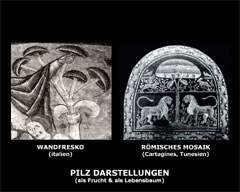1808 The `Roggenmuhme` (grain or rye-mother) appears in german folklore. Through the work and study of the US-American doctor John Stearns, the uterus-contracting `Ergot` enters officially into medicine (Gynecology).
1824 Because of its toxicity the critic Dr. Hosack terms Camerarius`s`Pulvis ad partum` `Pulvis ad mortum`.
1879/1880 The last mass intoxication from ergot infected flour in Germany is called the `Frankenberger Epidemic`.
1918 At the swisse Sandoz laboratories Dr. Werner Arthur Stoll succeeds in isolating the most important functional ingredients of alkaloid derivates in `Ergot` or `mothercorn`.
1927 11000 people in the Ukraine (USSR) are infected with the horrible ergot-disease.
1931 Dr. Barger edits and publishes the history of `mutterkorn` and ergot related sicknesses in his Monograph `Ergot and Ergotism`.
1933 Publication of Leo Peruz’s novel `St. Petri Schnee` (St. Peters snow) describes the extraction of a medicine from `Mutterkorn`, to experience psychic reactions similar to religious ecstasy and deep happiness.

1938 LSD-25 (the 25th compound in a series of semi-synthetic lysergic acid amides produced by a laboratory syntheses of ergot alkaloids, is formulated by Dr. Albert Hofmann at Sandoz Pharmaceutical Laboratories in Basel. Tested on laboratory animals it is making them `restless`. LSD-25 is not deemed sufficiently interesting to test further. (Other lysergic acid derivatives are proven useful obstetrics, geriatrics and the treatment of migraine headaches.)
1942 Ergot poisoning: in `Mighty Mouse vs. The Ergot`, the cartoon character – `Here I come to save the day` – experiences hallucinatoric states of consciousness.